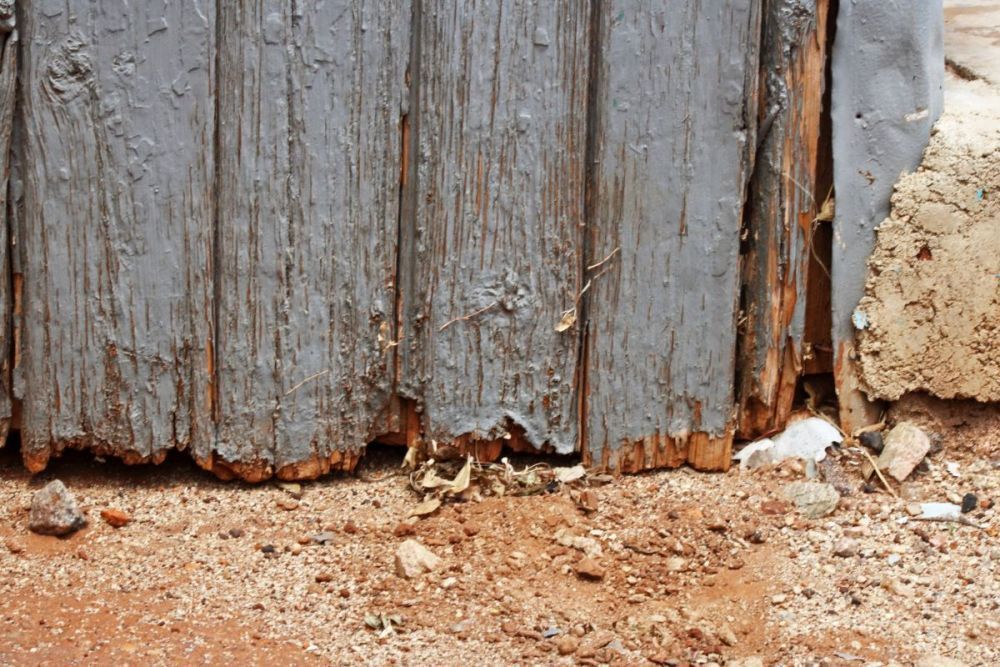
How Far Off the Ground Should a Wood Fence Be?
Whether you’re getting ready to build your own fence or hiring someone to do it for you, chances are you’re a little obsessed with wood fence specifications.
However, while you might be focusing on the big picture things like whether you want horizontal or vertical boards, how high your fence will be, and what kind of finish you want, there are small details that can have a big impact on your fence design and durability. If you’re asking how far off the ground should a wood fence be, you’re on the right track. Here’s what you need to know.
Why You Need the Gap!
The first thing you need to know about how far off the ground a wood fence should be is why you need the gap under your fence.
You might be tempted to put your fence boards all the way to the ground, especially if you have pets that might try to get under your wood fence.
However, wood is porous, which means it has holes and even tiny tubes inside the grain of the wood. When trees are alive, these tubes, using something known as capillary action, move liquid to the branches and leaves on the tree.
When trees are cut down, dried, and possibly treated for wood fences, those tubes are still there. This means that your wood fence boards can act like natural straws, absorbing the water from the ground and moving it up your fence.
Obviously, wood and water aren’t a great combo, and when this happens, it means your fence is much more likely to rot faster.
Why You Might Want the Gap
Preserving your wood fence and preventing premature rot is the number one reason why you want a gap under your wood fence, but there are others.
One of the most practical is if your wood fence is installed on a grassed lawn area. Mowing along a wood fence is tricky, and a small gap under your fence boards will make trimming grass and plants a lot easier!
Gates Need Gaps Too
Wood fences aren’t the only things that need gaps. Wood gates also need a little room underneath to work properly.
Very often, the area under your gates is not completely level. A little space to ensure that your gate can swing makes it a lot easier to use them. Your gate also won’t get stuck if you happen to have some dirt buildup in the gate opening.
So How Much Gap Does a Wood Fence Need?
Now that you know why you need a gap under your wood fence, it’s time to look at how much you need.
In most cases, for most fence systems, the gap under the fence is between one and two inches or about 25 to 50 millimeters. Sometimes, this can be increased if there is a specific reason for it.
Consider a Rot Board
If you don’t want a two-inch gap under your wood fence, you might consider adding a rot board to the design. This is another horizontal board that is installed at the bottom of the fence that closes the gap and ensures that your fence stays protected.
Wood Fence Design Is Regional
The most important thing to know about wood fence design is that it is really regional. Some things that don’t work in some places are common in others, and the same goes for materials, gaps under fences, and more.
Be sure to ask your wood fence installer what their typical under-fence spacing is and what they do if there are uneven spots along your fence line. Since they know the local climate and other factors, they’ll be best equipped to give you the right wood fence design advice.
Also, remember that even with a gap under your fence, your posts might still be susceptible to water absorption. Domed concrete footings to ensure water runs off your fence post footings instead of pooling there and installing your posts on a gravel layer for drainage are both options that can help to prevent this.
Talk to your wood fence installation company and find out what they recommend for your site. That’s the best way to ensure you get a wood fence that will last as long as possible.


